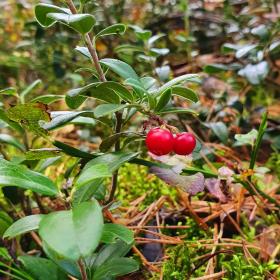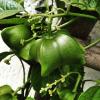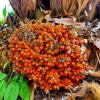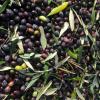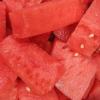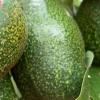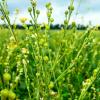Lingonberry (Vaccinium vitis-idaea) is a wild berry of the Northern forests. Berry juice and flesh are rich in antioxidants such as anthocyanins, and vitamin C. Lingonberry seeds are excellent sources of bioactive natural lipids.
Lingonberry seed oil is among the richest natural sources of α-linolenic acid (18:3n-3), the most important omega-3 fatty acid in the plant kingdom. Humans must acquire it through external sources, as it is the precursor of other long-chain omega-3 fatty acids. In addition to the commonly known effects of omega-3 fatty acids on skin health, recent studies following the metabolic path of α-linolenic acid have mainly highlighted the potential importance of this fatty acid for skin and hair.
Furthermore, results from the latest research have shown that α-linolenic acid has significant skin-lightening effects, primarily due to the inhibition of melanin synthesis and the stimulation of stratum corneum turnover.
Vaccinium Vitis-Idaea Seed Oil also contains a high linoleic acid (18:2n-6), another fatty acid with significant skin-lightening effects. α-Linolenic and linoleic acids constitute up to 90% of the total fatty acids of Lingonberry Seed Oil.Lingonberry seed oil contains up to 40% linoleic acid, a fatty acid essential for maintaining healthy skin. Linoleic acid is a component of ceramides critical to the structure of the skin's lipid barrier. Linoleic acid deficiency results in characteristic scaly skin and excessive water loss in the epidermis. In the skin epidermis, linoleic acid is transformed into hydroxyoctadecadienoic acid (13-HODE), which has been shown to exert anti-proliferative effects in the tissue.
Antioxidant activity
Vaccinium Vitis-Idaea Seed Oil is one of the richest natural sources of γ-tocotrienol. The antioxidant activities of α-tocotrienol and the common vitamin E isomer, α-tocopherol, have been compared under essential conditions for their antioxidant functions. Natural α-tocotrienol exhibits 40-60 times higher antioxidant activity against lipid peroxidation in microsomal membranes.
The higher antioxidant potency of tocotrienols is due to the combined effects of three properties of tocotrienols as compared with tocopherols:
- It's a higher recycling efficiency
- It's a more uniform distribution in the membrane
- It's a more efficient interaction with lipid radicals within the membrane.
UV irradiation generates free radicals, depletes the skin's antioxidants, and leads to increased lipid peroxidation and inflammation. A topical application of natural tocotrienols before UV irradiation preserves antioxidants in the skin, indicating the protective effect of tocotrienols on the skin against UV irradiation.
